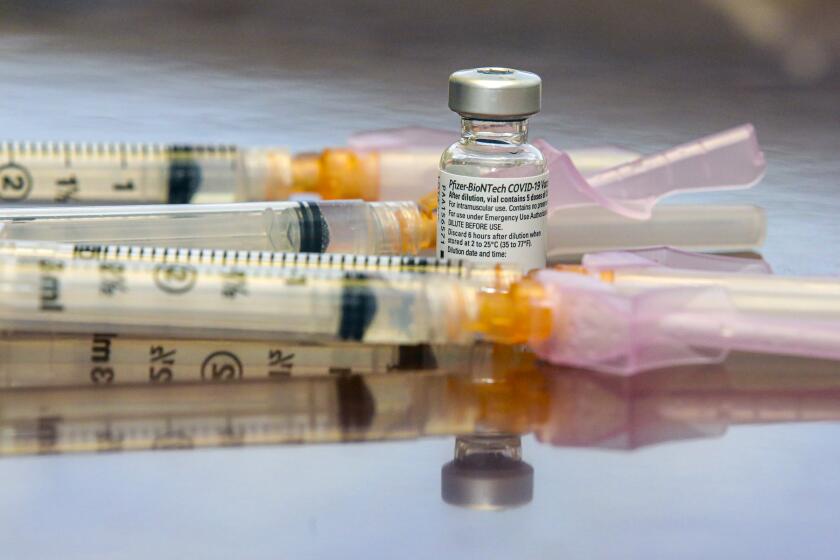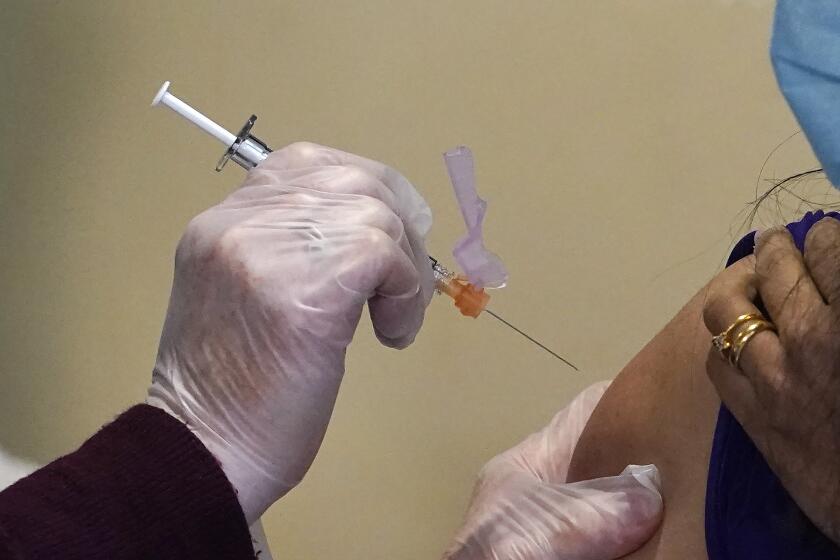California breaks daily coronavirus case record again as deaths continue to rise

- Share via
More Californians are dying of COVID-19 now than at any other point in the pandemic.
But as ferociously as the coronavirus has spread this autumn, it still continues to stalk certain communities much more than others.
More than 1,500 people lost their lives to COVID-19 in the last week — a number that represents 7% of the state’s more than 22,000 total coronavirus-related fatalities.
The death tolls seen Tuesday, Wednesday, Thursday and Friday — 295, 394, 288 and 265, respectively — represent the four deadliest days the state has seen throughout the entire pandemic, according to data compiled by The Times.
California on Friday broke a record for most coronavirus cases in a single day with 53,326, topping the high last set Wednesday, when 52,330 cases were reported, according to The Times’ county-by-county survey. The state is now averaging more than 40,000 new coronavirus cases a day over the last week, a new record and 10 times the figure from Halloween.
The record for the number of Californians currently hospitalized for COVID-19 has been broken for 20 days in a row, rising to 16,019 by Thursday, including 3,447 people in intensive care units. COVID-19 hospitalizations have multiplied sevenfold since mid-October.
The state recorded 265 COVID-19 deaths Friday, its fourth-largest single-day tally. California is now averaging 226 deaths a day, also a new record, and five times the comparable figure from early November.
Elderly Californians and people of color are being hit disproportionately hard by the latest surge.
L.A. County Public Health Director Barbara Ferrer warned that the weekly death count in skilled nursing facilities is starting to increase, although it hasn’t reached the level seen early in the pandemic.
And, while the death rate among white residents remains stable — at one to two per day per 100,000 residents — the death rates for Latino, Black and Asian residents are rising. Among Latino residents over the last four weeks, for example, the death rate has jumped from 1.4 daily deaths per 100,000 residents to 4.5 daily deaths per 100,000.
Latino communities are at higher risk for several reasons. Members tend to be essential workers who must go to retail stores, manufacturing plants and other sites rather than work from home, raising the chance they’ll come in contact with an infected person. Some Latino neighborhoods are more densely populated, making the virus easier to spread.
Among Black residents, the death rate has jumped from less than 1 death per 100,000 residents to more than 3 deaths per 100,000.
And among Asian residents, the death rate has risen from 0.5 deaths per 100,000 residents to 3 deaths per 100,000.
California is now tallying an average of 203 COVID-19 deaths a day over a seven-day period, and 35,200 cases a day — both records, and both quadruple the numbers from mid-November.
Younger adults are spreading the virus the most, officials said, but it’s the oldest adults, when they get infected, who are dying at the highest rates.
Concierge doctors are stocking up with ultra-low-temperature freezers and are being inundated with calls from well-heeled clients looking for an edge in getting the COVID-19 vaccine.
In a week of losses, there was some hope. The first doses of COVID-19 vaccine have arrived, and hundreds of thousands more are on the way.
Hundreds of L.A. County healthcare workers have received a dose, and that number was expected to hit 1,500 by the end of Friday and roughly 6,000 by Christmas.
“Our goal is to get to 10,000 workforce vaccinations by the end of the calendar year,” said Dr. Paul Giboney, associate chief medical officer at the L.A. County Department of Health Services.
But widespread inoculation for the public is probably still months away. Given how widespread coronavirus transmission is now, officials say it’s vital that residents do all they can to keep themselves and their loved ones safe.
“We need the public to listen to these mitigation strategies to slow the spread or we will completely run out of [hospital] beds,” Giboney said.
That means wearing masks in public, washing hands regularly and staying home when sick. Perhaps most critically, officials say, people should keep physical distance from, and avoid gathering with, those they don’t live with.
Several states say they have been told to expect far fewer doses of the Pfizer COVID-19 vaccine in its second week of distribution.
While that last ask could be a bridge too far for pandemic-weary Californians eager to ring in the winter holidays with family and friends, officials say some seeds of today’s virulent surge were planted around Thanksgiving, when too many traveled or got together in defiance of public health warnings.
Making the same choice this time around, officials warn, will only prolong — and potentially worsen — the surge.
“We are now learning a very painful lesson that, despite how much we want things to go back to normal, this virus is relentless and will continue to spread, make people very ill and, tragically, lead to people passing away,” Ferrer said in a statement. “We can’t afford another holiday season surge that will further overwhelm our already strained hospitals and healthcare staff.
“We must all work together to prevent as much death as possible.”
Times staff writer Colleen Shalby contributed to this report.
More to Read
Sign up for Essential California
The most important California stories and recommendations in your inbox every morning.
You may occasionally receive promotional content from the Los Angeles Times.














